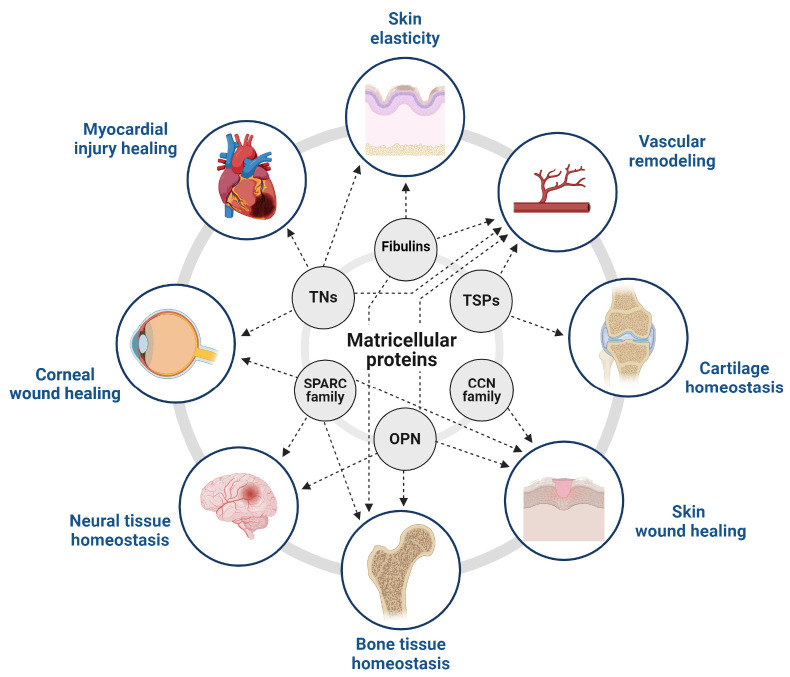Fig. 2.
The role of matricellular proteins in tissue homeostasis. Matricellular proteins maintain tissue homeostasis across various tissue types. The schematic diagram represents the impact of matricellular proteins on essential processes in different tissue types, such as blood vessels, eyes, skin, heart, bone, and brain. These processes include tissue remodeling, tissue repair, angiogenesis, and wound healing, all of which significantly contribute to maintaining tissue homeostasis. The matricellular proteins play different roles in various tissues and contribute to maintaining the equilibrium of the body’s internal environment.

